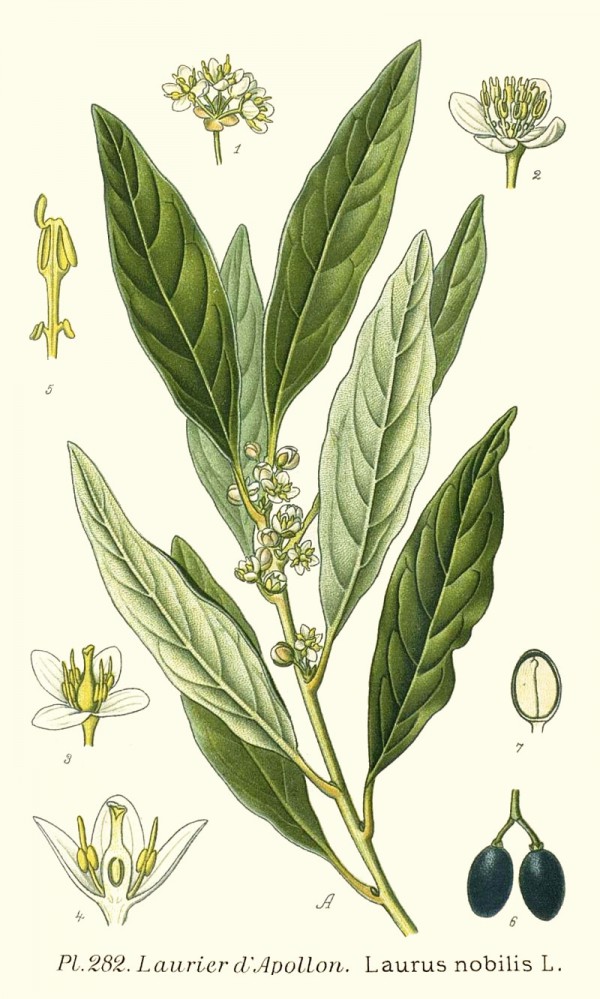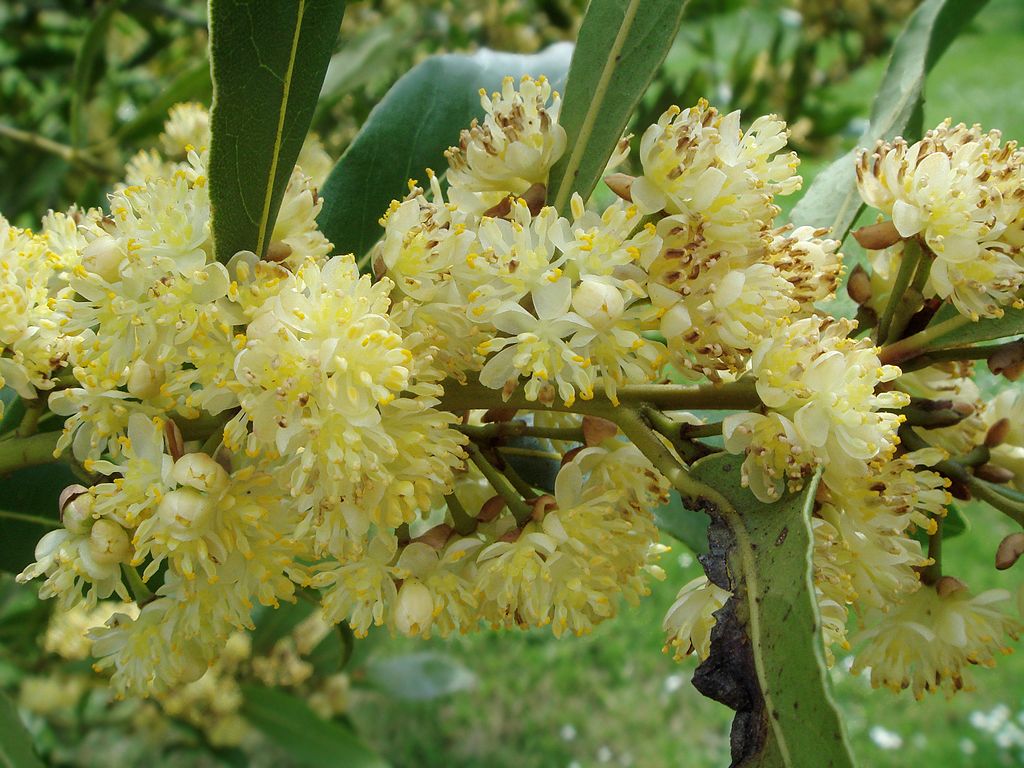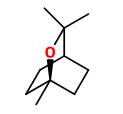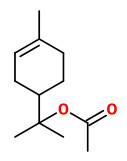Laurus nobilis L. - Lauraceae - laurel, bay laurel, sweet bay, true laurel, bay tree, green bay, Echter Lorbeer, Lorbeerbaum
Large shrub or small tree, up to 15m high, native to the Mediterranean region. Dried leaves (entire) used as spice in cooked meals like red and white cabbage and meat sauces (game).
„Ovid tells the story in the Metamorphoses that laurel tree was first formed when the nymph Daphne was changed into a laurel tree because of Apollo's pursuit of her. Daphne is the Greek name for the tree.
A wreath of bay laurels was given as the prize at the Pythian Games because the games were in honor of Apollo, and the laurel was one of his symbols. The symbolism carried over to Roman culture, which held the laurel as a symbol of victory. It is also the source of the words baccalaureate and poet laureate, as well as the expressions „assume the laurel“ and „resting on one's laurels“. “
http://en.wikipedia.org/wiki/Laurus_nobilis
„The chemical composition of the essential oil in bay leaves of different origins has been studied by different researchers. 1,8-Cineole was the major component in all cases, with percentages ranging between 30% and 56%, followed by linalool, α-terpinyl acetate, and several monoterpene hydrocarbons such as β-pinene and sabinene. Benzene compounds (eugenol, methyl eugenol, and elemicin), present in percentages ranging between 1% and 12%, are responsible for the spicy aroma of bay leaves and are extremely important factors determining the sensory quality of bay leaves.“
[Effect of Drying Method on the Volatiles in Bay Leaf (Laurus nobilis L.). M. Consuelo Díaz-Maroto , M. Soledad Pérez-Coello , and M. Dolores Cabezudo, J. Agric. Food Chem., 2002, 50 (16), pp 4520-4524]
The main components identified in the essential oil of L. nobilis were 1.8-cineole (41.8%), sabinene (9.1%), α-pinene (7.2%), linalool (7.0%), α-terpinyl acetate (5.4%) and β-pinene (5.2%).
[The chemical composition of some Lauraceae essential oils and their antifungal activities. Simić, A., Soković, M. D., Ristić, M., Grujić‐Jovanović, S., Vukojević, J., Marin, P. D., Phytotherapy Research, Vol.18(9), 2004, 713-717]
„The volatiles of fresh leaves, buds, flowers, and fruits from bay (Laurus nolilis L.) were isolated by solvent extraction and analyzed by capillary gas chromatography-mass spectrometry. Their odor quality was characterized by gas chomatography-olfactometry-mass spectrometry (HRGC-O-MS) and aroma extract dilution analysis (AEDA). In fresh bay leaves 1,8-cineole was the major component, together with α-terpinyl acetate, sabinene, α-pinene, β-pinene, β-elemene, α-terpineol, linalool, and eugenol. Besides 1,8-cineole and the pinenes, the main components in flowers were α-eudesmol, β-elemene, and β-caryophyllene, in fruits (E)-β-ocimene and biclyclogermacrene, and in buds (E)-β-ocimene and germacrene D. The aliphatic ocimenes and farnesenes were absent in leaves. By using HRGC-O-MS 21 odor compounds were identified in fresh leaves. Application of AEDA revealed (Z)-3-hexenal (fresh green), 1,8-cineole (eucalyptus), linalool (flowery), eugenol (clove), (E)-isoeugenol (flowery), and an unidentified compound (black pepper) with the highest flavor dilution factors. Differences between buds, flowers, fruits, and leaves with regard to the identified odor compounds are presented. “
[Volatile constituents and key odorants in leaves, buds, flowers, and fruits of Laurus nobilis L., Kilic, A., Hafizoglu, H., Kollmannsberger, H., Nitz, S., Journal of agricultural and food chemistry, Vol.52(6), 2004, 1601-1606]
„… results showed that the concentration of the main EO components varied significantly (p< 0.05) with the
method of drying… Drying at ambient air and IR drying at 45°C resulted in important increases in the
concentration of most of the main oxygenated monoterpenes such as 1,8-cineole, linalool, terpinen-4-ol and methyl eugenol. The amounts of thymol and cinnamyl alcohol increased remarkably in the case of air drying… As for borneol which was absent in fresh leaves, it appeared under the different drying methods with appreciable to high levels ranging from 224.45µg/g of dry weight in the case of oven drying at 65°C to 1199.11 µg/g of dry weight in the case of drying at ambient air.“
[Qualitative and quantitative changes in the essential oil of Laurus nobilis L. leaves as affected by different drying methods., Sellami, I.H., Wannes, W.A., Bettaieb, I., Berrima, S., Chahed, T., Marzouk, B., Limam, F., Food Chemistry, 126(2), 2011, 691-697]

Masclef,A., Atlas des plantes de France, vol.3 t.282
http://plantgenera.org/species.php?id_species=589221

Flowering branch of Laurus nobilis in Bormarzo, Italy.
CC BY-SA 3.0, Author: G.Hagedorn (2009) Wikimedia Commons






